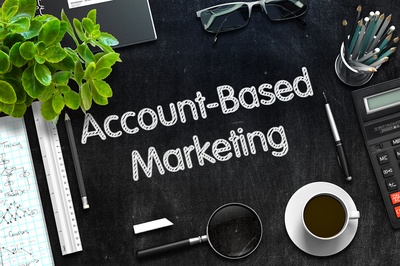 Inbound marketing is still somewhat of a mystery for some companies. These companies have been slow to respond, slow to adjust to today’s customer, and they’re simply unable to understand how a strong online presence leads to business growth. However, there are other companies that have moved beyond inbound marketing and are instead focusing on account-based marketing. So, what's the difference between the two and how can they be used together?
Inbound marketing is still somewhat of a mystery for some companies. These companies have been slow to respond, slow to adjust to today’s customer, and they’re simply unable to understand how a strong online presence leads to business growth. However, there are other companies that have moved beyond inbound marketing and are instead focusing on account-based marketing. So, what's the difference between the two and how can they be used together?
Understanding Inbound Marketing
Think back to what marketing was before the internet came along. It was a time when businesses generated leads with advertisements on TV and radio. They relied upon direct mail campaigns, trade shows, and exhibits. It was a time where generating leads was anything but an exact science. After all, how do you know which method generated the lead when everyone was exposed to all your strategies? It's true that some companies asked customers directly, but this strategy was less than reliable. Then, inbound marketing came along.
Inbound marketing is online search marketing. You’re no longer looking for customers and hoping they notice your company by happenstance. You’re not hoping they fall upon your banner advertisement on the highway. Instead, you’re being found online every time a customer searches for your business, your product offering, or your services. This involves using digital marketing to generate leads and making sure your website is optimized so that you’re converting more website visitors. The first step is to adopt the strategies, while the second is optimizing your website for the incoming traffic.
Using Digital Marketing
Content marketing is one strategy used in digital strategy. It’s inexpensive, easy-to-use and generates leads long into the future. Email marketing is another strategy companies use as is social media. Digital advertising involves using text link advertisements and visual banners through expansive publisher networks as a means of driving customers to your company’s website. The website itself, and each of your website’s landing pages, all fall under your inbound marketing strategy.
Most of today’s companies have moved beyond just trying to reach customers through their laptops. Having a mobile-optimized digital strategy is an absolute must if you want to reach all your customers. This means having a mobile-friendly website and using digital strategies that are aimed specifically at mobile users. The more you engage your market through their mobile devices, the more likely you are to get that all-important new offer in front of your customers.
Website Optimization
The glue that holds your entire inbound marketing strategy together is your prowess in search engine optimization (SEO). Your digital marketing strategies help you reach customers in real-time, but it’s your website and strengths in SEO that convert those visitors into real customers. This involves revising your website analytics and metrics and ensuring that your website is both easy to navigate and interesting enough to elicit an inquiry.
Success with inbound marketing is all about increasing customer engagement. You engage them and build your brand through digital marketing. You drive them to your website and then you continually assess your website’s ability to convert visitors. Along the way, you’re modifying and adjusting your website’s design, tweaking the layouts of your landing pages and improving your calls-to-action (CTAs). The more engaging your content, the more interesting your offer, the more likely you are to generate a lead.
 Understanding Account-Based Marketing
Understanding Account-Based Marketing
One of the marketing worlds newest "buzz words" is Account-Based Marketing or ABM. When I attended Inbound17 every presentor seem to weave ABM into their presentation and how it was the future So, what exactly is account-based marketing relative to inbound marketing? The best way to define account-based marketing is to think about holding your customer’s hand and guiding them along a journey, one where you can prompt them and incentivize them to act with different digital marketing strategies. Your goal with inbound strategies is to generate leads by appealing to a wider audience. You drive traffic to your website by appealing to your entire market. Once prospects arrive, your website takes over and you convert your leads.
Account-based marketing uses elements of your inbound marketing strategy with one key difference; account-based marketing is more focused and customized. It’s not a generic, "me-too" strategy. It’s not about appealing to an audience across your entire network and it’s not a numbers game. Instead, it’s a specific plan of attack for a specific customer. It’s centered around the unique interests and needs of that customer. You’re still using content, digital advertisements, and email campaigns, but they’re introduced at specific times based upon where your contact is in their buying process. Here are some of the essentials of having a successful account-based strategy.
- Identify Key Accounts: Start by identifying your largest customers. What position do they hold in your market? What and when do they buy? Why do you feel it’s important to grow their business? Understanding why you’ve chosen them will help you line up specific digital strategies to move this customer forward.
- Outline Key Decision Makers: With inbound marketing, you’re focused on buyer personas. These are general descriptions that break up customers into different segments. However, account-based marketing focuses on the specific decision makers within your key accounts. Your goal is to define who these decision makers are and the reasons they have for making purchases.
- Define their Journey: Your buyer’s journey is a more general outline of how different customer types go through the process of turning from a lead to a paying customer. However, the journey you map out for your key decision makers is more customized. This allows you to deliver content and offers based on the real-time feedback these decision makers provide.
- Account-Based Strategies: How will you move these contacts along their journey? What offers are they interested in? What are their fears, concerns, and motivations? Having a specific strategy for your largest customers forces your sales and marketing team to work in unison. They’ll engage the customer, understand their needs, and then deliver the right content, digital offers and promotions when those decision makers need it most.
Inbound marketing is a general approach to your market. Account-based marketing is focused on a select few customers you've deemed essential to hitting your revenue targets. This approach forces you to engage C-level executives and key decision makers in your largest accounts so that marketing and sales are committed to moving those individuals with the right solution at the right time.
If you need help upgrading your inbound marketing approaches, or if you want to implement an account-based strategy, then contact us now and request an assessment.
Written By: Doug Milnor


